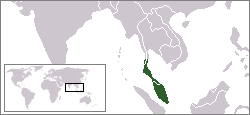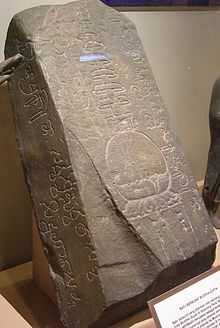Raktamaritika

| History of Thailand |
|---|
 |
| Prehistory |
| Early history |
|
Legendary Suvarnabhumi Central Thailand Dvaravati Lavo Supannabhum Northern Thailand Singhanavati Ngoenyang Hariphunchai Southern Thailand Pan Pan Raktamaritika Langkasuka Srivijaya Tambralinga Nakhon Si Thammarat Sultanate of Pattani Kedah Sultanate |
| History |
|
Sukhothai Kingdom Ayutthaya Kingdom Thonburi Kingdom Rattanakosin Kingdom Military period Democratic period |
|
Regional history |
|
Related topics |
Raktamaritika is one of the lost kingdoms of Thai history. Raktamaritika is a Sanskrit name meaning red earth land, while in Chinese records it is named Chi-Tu-Guo (Chinese: 赤土国, pinyin: Chì-tǔ-guó, Chi – red, Tu – earth, Guo – country or state). The Sui Dynasty (581–618) chronicles records an advanced kingdom called Chitu in 607, when Chang Chun was sent as an ambassador there.
Location of Raktamaritika

Scholars do not agree on the location of Raktamaritika. While some consider it in the area of Phatthalung / Songkhla area. The ruins around the Songkhla lake such as Bang Kaeo in Phatthalung or Sathing Phra in Songkhla then might be one of the cities of Raktamaritika.
Songkhla vicinity theory
The inscription of the Buddhagupta Stone found in Kedah mentioned a Raktamaritika, the meaning is red earth land, to be the home town of a seafarer named Buddhagupta.
The old name of Songkhla is Singgora (City of Lions), which coincides with the fact that according to the Chinese chronicles the capital of Chitu was Sing-Ha (means lion) and also the nearby Singhanakhon district.
This name may also be related to Tambralinga because there is "Tam" (means red) in this name as same as Raktamaritika and Tampapanni. And this state has appeared in 642, the same area of the central Malay peninsula after Chitu has already faded away from the history. The best evidence supporting this theory is the mention that when the envoys left Chitu, the sailing took 10 days to reach Champa, which indicates the kingdom was located at the ‘red earth’ areas such as Rattaphum because Rattaphum means red earth as well.
Raktamaritika in Chinese chronicle

“The royal family's name is Chu-Dan (means Gautama Buddha) and the king is Li-Fu-Duo-Se. According to Chinese records, Chitu was built by peoples who sailed from the coast of Funan. Centuries later, the local inhabitants, replaced Funan peoples... ...Chitu is a derivation nation of Funan, located in within the southern sea, sailing hundred days to reach, the majority terrain was red, thus named Red Earth country. East bordering Po-Lo-La, West bordering Po-Lo-So, South bordering Ho-Lo-Tan, North reaching the sea, thousands of square miles in land area. The king has three wives and the kingdom embraced Buddhism. The city that he keep his court is Seng-Chi (Sing-ha). ...".
See also
Resources
- Stuart Munro-Hay. Nakhon Sri Thammarat. The Archaeology, History and Legends of a Souther Thai Town. White Lotus. pp. 19–22. ISBN 974-7534-73-8.